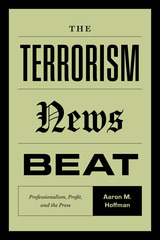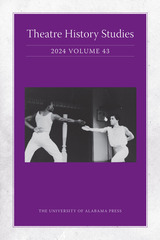
Traces the little-known story of the bitter contest for the fate of the University of Alabama after the Civil War
In The Battle for the University of Alabama, William Warren Rogers Jr. gives a fascinating account of the fierce struggle over the nature of the University of Alabama after the Civil War. Union forces reduced the campus to ruins as the war ended, and the university did not reopen until 1869. In the interregnum, powerful forces shifted the trajectory of the school. Alabama Republicans authored an egalitarian state constitution that delivered oversight of the university to the Republican Party. That set the stage for turmoil and confrontation. This book tells the story of that conflict.
In the next few years, Democrats charged Republicans with turning the university into a “radical” institution. They alleged that a handful of unqualified individuals had gained faculty positions because of their political allegiance, which resulted in the university’s academic desecration. Professors were bitterly denounced in the state newspaper press and quite personally in Tuscaloosa. Administration of the university became part of the fratricidal political debate in the state. Political violence and questions concerning race, specifically the possible integration of the university, illuminated the controversies of the Reconstruction years. Many of these questions resonate even today.
This authoritative account sets events at the University of Alabama against the backdrop of what occurred at other state universities in the Reconstruction South. The University of North Carolina experienced controversy similar to Alabama’s. At the University of Georgia, however, calm prevailed. This story of the incendiary events at Alabama’s flagship university charts new ground and provides a revelatory look into the extraordinary partisanship that characterized the South after the Civil War.
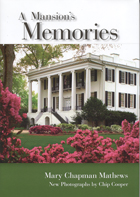
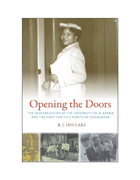
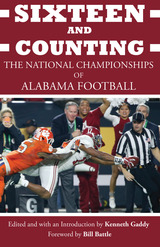
Dating back to 1925, when Wallace Wade coached the Crimson Tide to an undefeated season and earned a spot in the Rose Bowl, the driving goal of every University of Alabama football season has been a national championship. A winning team surfaced that very next year, when Hoyt “Wu” Winslett’s squad sealed the national championship at the Rose Bowl for a second time. Winning seasons and bowl games culminating in the coveted crown followed again in 1930, 1934, 1941, 1961, 1964, 1965, 1973, 1978, 1979, 1992, 2009, 2011, 2012, and 2015—more championships than any other college team in the nation.
Sixteen and Counting features a chapter highlighting each of these championship seasons and collects the legendary stories of many of the outstanding coaches and players on the University of Alabama’s championship teams. College football legends such as Wallace Wade, Wu Winslett, Johnny Mack Brown, Pooley Herbert, Frank Thomas, Dixie Howell, Don Hutson, Jimmy Nelson, Holt Rast, Pat Trammel, Sam Bailey, Lee Roy Jordan, Harry Gilmer, Bill Lee, Ken Stabler, Joe Namath, Gary Rutledge, Randy Billingsley, Barry Krauss, Clem Gryska, Gene Stallings, Paul “Bear” Bryant, and, of course, Nick Saban all make prominent appearances.
A seventeenth chapter is included that looks at the uncrowned teams commonly referred to as “the other five,” who were considered national champions by at least one national ranking service at the end of the season. Every glorious milestone and high point in Alabama football history is included here: “Mama called,” the wishbone formation, “The Goal Line Stand,” the Million Dollar Band, the coaching tower, the Davis kicking dynasty, the Notre Dame box, Coach of the Year, Team of the Decade, and two Heisman trophy winners.
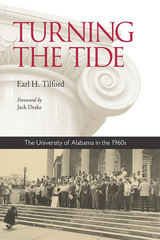
This book documents the period when a handful of University of Alabama student activists formed an alliance with President Frank A. Rose, his staff, and a small group of progressive-minded professors in order to transform the university during a time of social and political turmoil. Together they engaged in a struggle against Governor George Wallace and a state legislature that reflected the worst aspects of racism in a state where the passage of civil rights legislation in 1964 and 1965 did little to reduce segregation and much to inflame the fears and passions of many white Alabamians.
Earl H. Tilford details the origins of the student movement from within the Student Government Association, whose leaders included Ralph Knowles and future governor Don Siegelman, among others; the participation of key members of “The Machine,” the political faction made up of the powerful fraternities and sororities on campus; and the efforts of more radical non-Greek students like Jack Drake, Ed Still, and Sondra Nesmith. Tilford also details the political maneuverings that drove the cause of social change through multiple administrations at the university. Turning the Tide highlights the contributions of university presidents Frank A. Rose and David Mathews, as well as administrators like the dean of men John L. Blackburn, who supported the student leaders but also encouraged them to work within the system rather than against it.
Based on archival research, interviews with many of the principal participants, and the author’s personal experiences, Tilford’s Turning the Tide is a compelling portrait of a university in transition during the turbulence surrounding the civil rights and anti-war movements of the 1960s.
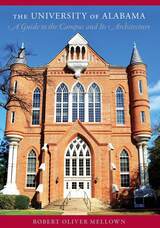
In 1988 the University of Alabama Press published Robert Oliver Mellown’s The University of Alabama: A Guide to the Campus, a culmination of a decade’s worth of research into both the facts and the legends surrounding the architecture, history, and traditions of the Capstone.
Over twenty years later, this new guide brings to light the numerous additions, expansions, and renovations the university has undergone on its spacious grounds in Tuscaloosa. In addition to updated sections devoted to the university’s historic landmarks—such as Foster Auditorium, where “the stand in the schoolhouse door” occurred; Denny Chimes,where the handprints and footprints of famous Tide athletes are memorialized in concrete; and the Gorgas House, which with stood the destruction of Union troops at the end of the Civil War—new sections account for the acquisition of Bryce Hospital’s campus, the expansions at Bryant-Denny Stadium to accommodate the growing Crimson Tide fan base, and the burgeoning student recreation facilities, playing fields, and residential communities.
Chapters are arranged into various campus tours for walking or driving—Antebellum, Victorian, Early Twentieth-Century, East Quad, West Quad, Science and Engineering Corridor, Student Life, Bryce, Medical, Southeast, Athletics, and Off Campus. Alumni, prospective students and their parents, new faculty, out-of-state visitors, and foreign dignitaries will all welcome this useful, compact, and colorful guide to one of the most beautiful campuses in the country.
READERS
Browse our collection.
PUBLISHERS
See BiblioVault's publisher services.
STUDENT SERVICES
Files for college accessibility offices.
UChicago Accessibility Resources
home | accessibility | search | about | contact us
BiblioVault ® 2001 - 2025
The University of Chicago Press


